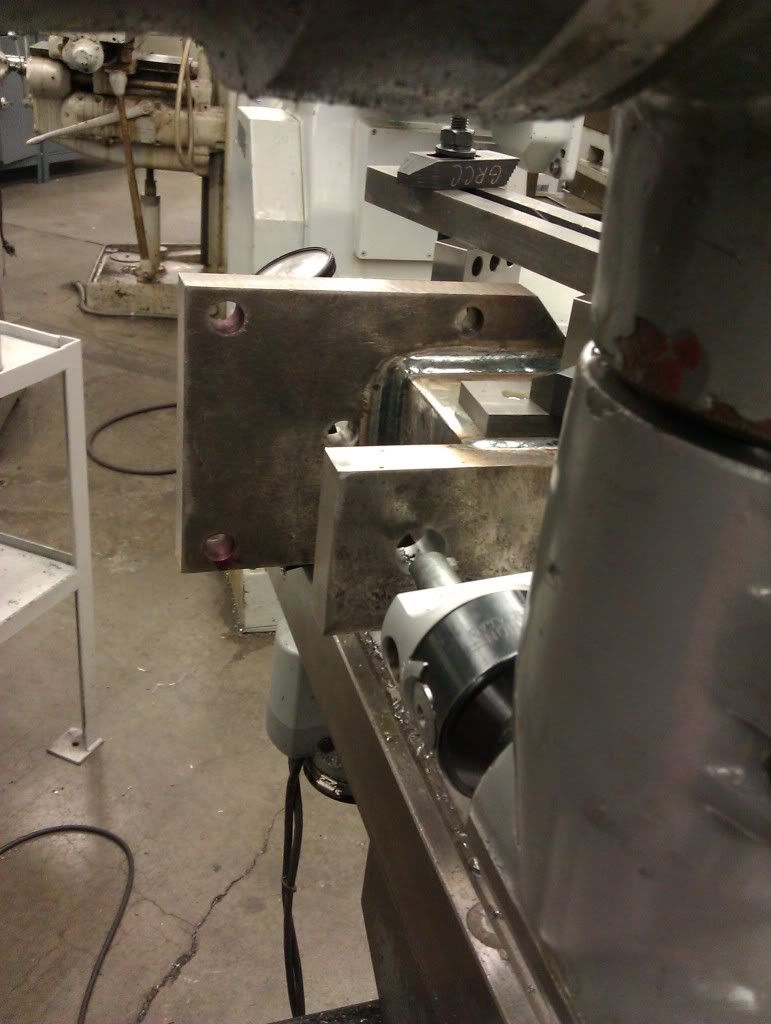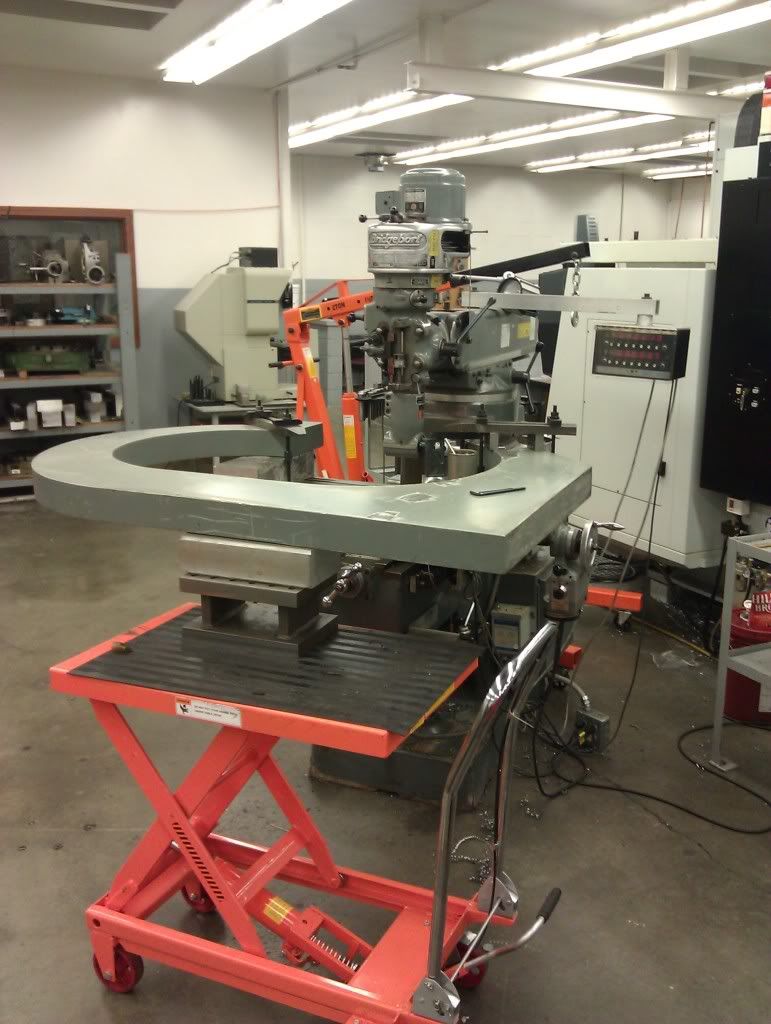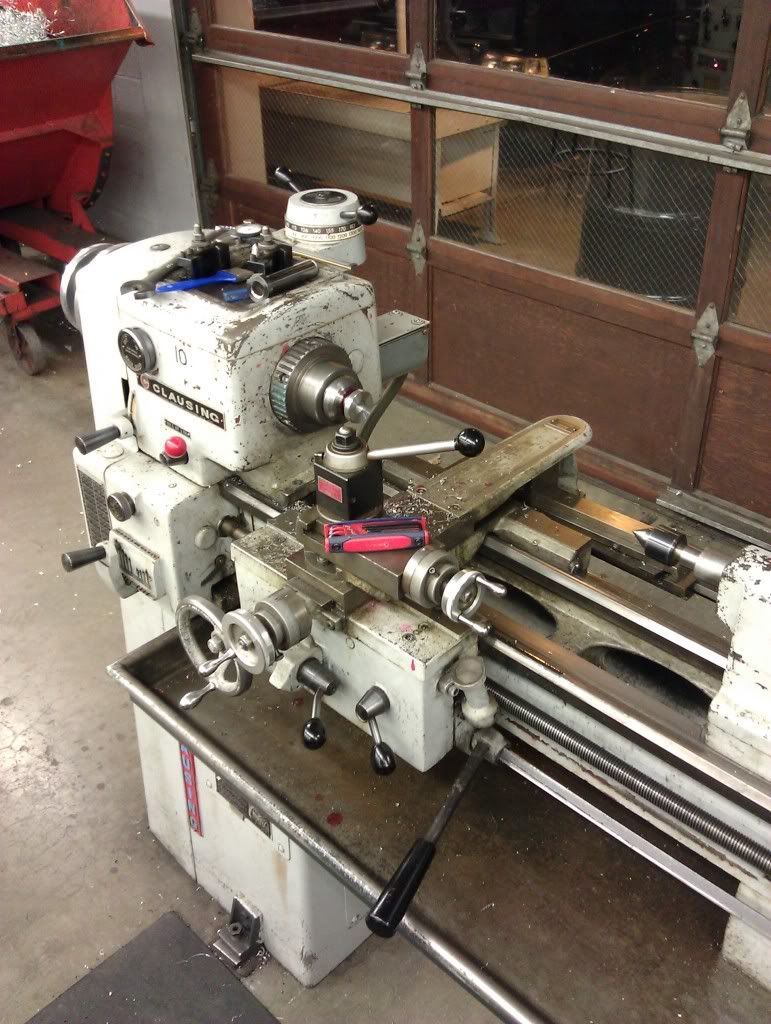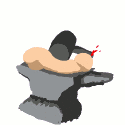|
The Scientist posted:This seems like an awesome hobby. Would you guys consider it too much of a nerdy thing to do if one of my hobbies was making models of interesting gear systems? More importantly, would outside observers consider it too much of a nerdy thing to do? I prefer a centrifugal CVT for something on this scale, but it can't be done with raw gears like that one can (I don't think?), and can't do reverse unless it's a two stroke engine and you 'baby walk' in the 'wrong' direction to start it. http://onemansblog.com/2008/12/03/how-a-continuously-variable-transmission-cvt-works/
|
|
|
|

|
| # ? May 26, 2024 17:20 |
|
I don't know if this stuff is mindblowing. Cams work on a very similar principle as elliptical gears.
|
|
|
|
Dielectric posted:"biopace" I have an old bike with a biopace chainring. Most people wouldn't notice it when riding. Apparently when it was first introduced they were much more exaggerated of an eccentric. For the gear lovers out there this video series is about the mechanical computers used for aiming the big guns on old warships. You really can compute just about anything with the right set of gears but it must be a hell of a pain in the rear end to keep this thing working on a moving ship. http://www.youtube.com/watch?v=_8aH-M3PzM0
|
|
|
|
I don't want to stray the topic off of gears which is pretty interesting, but I found this VERY interesting to watch and figured this thread could use it.  http://video.pbs.org/video/1772044886 Why is rod iron not made anymore? IsaacNewton fucked around with this message at 04:19 on Feb 10, 2011 |
|
|
|
IsaacNewton posted:I don't want to stray the topic off of gears which is pretty interesting, but I found this VERY interesting to watch and figured this thread could use it. I gave up watching halfway through the third commercial. Was there a show, and what was it about? [edit] Okay, I left it running for a while and eventually there's a show. It's 30 minutes long though and I only watched the first couple minutes. ,,, Wrought iron isn't made much anymore because contrary to what Mr Blacksmith there says, there's no industrial-scale demand for it since there's other metals now that are much stronger and durable. Those newer metals can't be worked with traditional methods so they're not much use to a blacksmith. The metals place I go to has piles of cast iron plate, some pieces big & thick enough to carve car engine blocks out of. There's no shortage of that I can assure you. I don't believe it has any "grain" though. Maybe if you heated the stuff in charcoal and kept folding soot into it, it would get grain in it? If you need a easy source of small quantities of plain cast iron, barbell weights are available at sporting goods stores. They have sand in the surface which can interfere with sawing/drilling/machining. edmund745 fucked around with this message at 06:21 on Feb 10, 2011 |
|
|
|
IsaacNewton posted:I don't want to stray the topic off of gears which is pretty interesting, but I found this VERY interesting to watch and figured this thread could use it. Do you mean wrought iron? Also, the show is the Woodwright's Shop, which is in general pretty cool. They had a neat episode one time about making violins, but that's for another thread. EDIT: This episode specifically was about a blacksmith working with wrought iron. All those gearings are really interesting. I almost want to try and make my own gears. Especially some of the weirder, less common ones. Rotten Cookies fucked around with this message at 06:11 on Feb 10, 2011 |
|
|
|
Dielectric posted:Shimano used to have (not sure if anyone bothers anymore) "biopace" eccentric chainrings. The idea was to match the torque/speed to the natural mechanical characteristics of your legs. I never rode one but they apparently felt weird. Its funny, when I clicked on that page and saw the valve on top (the box of dense red particles, which I figure represent the steam's relative density/pressure) it looked a lot like the hydraulic valve that controls the lead screw that operates the rudder of a 737 jetliner. I know what this looks like, because this very part failed and was determined to be the cause of a crash. I think I saw it on an episode of "engineering disasters" of modern marvels (on the history channel). sixide posted:Once you could use a small electric motor geared as needed, I suppose they died out. Mechanical engineers in the days of a mill being run off a single shaft turning at a constant speed must have been sharp as gently caress. http://www.pbs.org/woodwrightsshop/video/2900/2907.html http://www.pbs.org/woodwrightsshop/video/2600/2612.html These are more of the woodwright's shop. Edmund you're missing out, man, I find this show riveting. I can't get enough of it. Yeah its got a lot of commercials at the beginning but that's because its public television. There are no traditional commercials throughout the program. Its worth it, I'm telling you. We just happened to be talking about this show over in the woodworking thread.
|
|
|
|
Making oddball gear demonstrators used to be final-project type stuff for drafting and machinist students. Nowadays it's almost a mouse-click affair since all the higher-end CAD programs will generate proper involute gears automatically, and there's CNC plasma cutters that will cut them out not quite perfect, but close enough to see that they're done correctly.
|
|
|
|
edmund745 posted:Wrought iron isn't made much anymore because contrary to what Mr Blacksmith there says, there's no industrial-scale demand for it since there's other metals now that are much stronger and durable. Those newer metals can't be worked with traditional methods so they're not much use to a blacksmith. The "grain" is glassy slag primarily composed of silica and it had the dual purpose of making the iron pretty much self-fluxing and also adding a little bit of rust protection. If you find a really old, rusted-out tool made of cast iron, the grain that protrudes from the surface of the metal is threads of silica, which did not rust away like the base iron. After the Bessemer process was introduced the cost of "mild steel" -- low carbon steel without a noticable slag content -- fell sharply, to the point where wrought iron simply couldn't keep up with purer forms of iron in terms of machinability and general industrial desirability, and that coupled with its small-batch production mentality meant that economies of scale more or less drove it into obsolescence. Mild steel is much more tolerant of low-temp forging due to the lack of grain (wrought iron tends to fray like a rope if not worked at a high heat initially, though the longer it is worked the finer the threads/grain become), though it is somewhat harder to weld. TMYK(TM) Dongsmith fucked around with this message at 07:23 on Feb 10, 2011 |
|
|
|
Wrought iron is also very difficult to produce consistently. In that the variance in batches could swing rather sharply in terms of hardness or toughness relative to more modern material control. Mild steel is pretty much mild steel, one batch from ironworks A will be very similar to another batch from ironworks B. Simply because the process involved is highly controlled, and we know now how to control what goes into it. Read up on this awesome guy: http://en.wikipedia.org/wiki/David_Kirkaldy Specifically the Tay bridge disaster bits.
|
|
|
|
Slung Blade posted:Wrought iron is also very difficult to produce consistently. In that the variance in batches could swing rather sharply in terms of hardness or toughness relative to more modern material control. ... Wrought iron became uneconomical to mass-produce compared to other materials, because the only people who would want it were blacksmiths, who were a declining business even then. If larger demand would have persisted, the cost and difficulty of producing it probably could have been lowered (over the past ~100 years). Consider that aluminum and titanium both started out far more costly to produce, and yet there's no shortage of either of them. Adjusted for inflation, they cost less now than they ever have before. To that end, I would be surprised if there's nowhere that produces bars of wrought iron in the traditional style. No major steel mill probably, but there's lots of atelier-style places that do old processes like this specifically to supply hobbyists.
|
|
|
|
From what I've read, silicon isn't quite as easy to get rid of or add compared to carbon, so it was harder to make it near-constant like mild steel is. But, like you said, it's mostly because no one cared enough to bother as there was no market for it. There are a few makers / recyclers of 'real' wrought iron left, or so they claim. http://www.realwroughtiron.com/
|
|
|
|
This seems like way too simple a question for this thread, but I'm not sure there's a better place to ask. I make metal roses out of hard drive platters. The platters are aluminum that's about 1mm thick. I've been using these to cut them: http://www.amazon.com/gp/product/B000WS1I56/ref=oss_product  They work well but they only seem to last about 50 roses or so before they start degrading. I dropped them off at a fabric store for sharpening before and they seemed even more useless afterwards. Is there something better I could be using? Or should I take them somewhere else for sharpening / do it myself?
|
|
|
|
Wow dude what an awesome idea. Do you actually cut the hard drive platters or just bend them? Also you save all those neodymium magnets, right? The ones in hard drives I've heard are super powerful. Plus the price of neodymium's going up as China devalues its currency and puts tighter restrictions on its export. edit: Also, to be honest, IDK that I've ever seen TiN coated tin snips. I couldn't say with any certainty the actual ramifications of that.
|
|
|
|
King Nothing posted:... I make metal roses out of hard drive platters. The platters are aluminum that's about 1mm thick. quote:...Is there something better I could be using? Or should I take them somewhere else for sharpening / do it myself? MSC sells a brand named Armstrong that is about $30 each for aviation snips; most of the other ones are only $15-$20. Other pages say the Armstrong blades are drop-forged. The Tinman site sells Midwest brand, also with forged blades, for around $30 too. Note the "extra hard" ones down the page: https://www.tinmantech.com/html/snips_aviation.php ------- Also--you don't ever really need to buy the "straight" snips, since either the left or the right will cut straight lines.
|
|
|
|
edmund did you notice that his are TiN coated?
|
|
|
|
The Scientist posted:Wow dude what an awesome idea. Do you actually cut the hard drive platters or just bend them? I cut them, then I bend them.  I saved magnets when I was taking drives apart, but these days other people take the drives apart and just send me the platters. Also the TiN coating is a new thing, the last two Fiskars snips I purchased are the first to have it. It's pretty much worn off on the blades so I dunno if it's worth anything. edmund745 posted:Huh..... The last couple drives I disposed of (within the last 12 months or so) were glass. Of the platters people send me, maybe 1 in 50 are glass. There's no difference in outward appearance, I find out when it shatters as I make the first cut. At least it doesn't happen that often.  I make tightly radiused left and straight cuts so I guess I should get an offset pair...straight or left? If straight does straight, left, and right, why shouldn't I buy it? Also I think I shouldn't buy "extra hard" because aluminum is softer than steel and it says that you shouldn't buy extra hard unless you're cutting something extra hard because they're not as durable. Is that incorrect? King Nothing fucked around with this message at 18:38 on Feb 11, 2011 |
|
|
|
Harder = easier to chip or break due to being more brittle as well, but I don't think that's likely to be a problem in your case unless you drop them a lot or something. And it's not a straight correlation because some steel alloys are able to be hardened more without losing as much toughness as straight carbon steel. You might consider a bench top shear. They're much more expensive of course, but also really durable and will slice through a hard drive platter like butter. I think they often have removable, sharpenable blades too. e. Maybe something like this, seems to run about a hundred bucks. Mount it to a bench and it'll go through those things like butter. Leperflesh fucked around with this message at 02:19 on Feb 12, 2011 |
|
|
|
Tin coating on scissors isn't much good because the top sides of the scissor blades is the cutting surface, but it's also the surface that gets ground down if you ever get the scissors re-sharpened.... so the first time you get Tin-coated scissors re-sharpened, the Tin coating is going to be ground off of where you'd want it. I dunno if the extra-hard snips would work better, but they're only $30. You might as well try one. Leperflesh posted:You might consider a bench top shear. They're much more expensive of course, but also really durable and will slice through a hard drive platter like butter. I think they often have removable, sharpenable blades too. ...
|
|
|
|
King Nothing posted:Is there something better I could be using? Or should I take them somewhere else for sharpening / do it myself? You will have to buy two pairs because of how the jaws are made. One set will cut with the waste on the left side, or allowing you to cut a left handed curve. The other set will leave the waste on the right side, or let you cut right curves. Klenk was a German immigrant who moved to the USA way back when, invented the aviation snip, and formed a business right here in Delaware, not even 5 miles away from my house. I have two pairs I bought about 5 years ago myself. These things are so drat good, the 4 pairs I inherited from my Pop-Pop who was a professional HVAC mechanic still cut wonderfully. If they can stand up to steel sheet metal, aluminum should not be an inssue! Any other aviation snip I've seen that doesn't say Klenk is garbage as far I'm concerned.
|
|
|
|
AbsentMindedWelder posted:You want Klenk Aviation Snips.
|
|
|
|
edmund745 posted:A lot of tool names that used to be good (Wiss for one) went to cheaper production methods when they went offshore. :/ 
|
|
|
|
AbsentMindedWelder posted:You want Klenk Aviation Snips. One thing I've noticed about the aviation snips is that they have a serrated blade. Last time I tried snips with a serrated blade I didn't like the edge it left in the metal compared to the smooth bladed snips I've been using. https://www.tinmantech.com/html/snips_specialty.php I ordered a pair of those, and it looks like Klenk sells a pair of snips without serrations too. Maybe I'll try that next. Thanks for the recommendations!
|
|
|
|
Very good. Do let us know what ends up working out for you. We answer so many questions, but hear few results in this thread. If you already have a pair of aviation snips with serrations, anybody who can professionally sharpen things could remove them relatively easily for you. You could attempt it yourself with a file and a whetstone, just make sure to maintain all the angles while you remove metal.
|
|
|
|
AbsentMindedWelder posted:Very good. Do let us know what ends up working out for you. We answer so many questions, but hear few results in this thread. So who can professionally sharpen things? Last time I dropped a pair of fiskars off at a fabric store and they came back sharp but useless for cutting metal somehow. I just called Lowes and Home Depot and they don't do it. Also I just noticed Klenk's Copper Cutting Aviation Snips don't have serrations, gonna order a pair of those to try also.
|
|
|
|
The only professional sharpeners I know are old men who sharpen knives, saws, chains, scissors, etc. in their garage. They do great work, you just gotta find them. Check your yellow pages and classified ads for sharpening services, the people who have this kind of busienss aren't the type to advertise on the internet. Call up some hair salons, restaurants, or wood shops, and ask them who sharpens their stuff.
|
|
|
|
King Nothing posted:So who can professionally sharpen things? Last time I dropped a pair of fiskars off at a fabric store and they came back sharp but useless for cutting metal somehow. I just called Lowes and Home Depot and they don't do it. Also I just noticed Klenk's Copper Cutting Aviation Snips don't have serrations, gonna order a pair of those to try also. So I hate to be the guy who says 'google it', but if your profile is correct you may want to look at this: http://www.411.com/business?key=sharpening&where=Albuquerque%2C+NM and call the companies listed. Evidently Sears in your area has paid money to be associated with sharpening, so call them too. I just can't see a fabric store being able to sharpen blades intended for metal cutting correctly. Final option if those first two peter out would be buy a grinder, buy a whetstone and get sharpening yourself (not as scary as it seems).
|
|
|
|
Next upgrade:  After some use, I realized that having the helping-hand tool so close to me while working was annoying, so I took the cutting torch to another spot towards the back of the 3/4" plate. My workspace now has two hardy-holes, the rear one that'll likely keep the helping-hand in place full-time, and the front one that I'll keep free unless I need to do some shaping.
|
|
|
|
drat, for some reason I really dig that thing. The helping hands I've always used when soldering electronics are super lovely, they never stay in the position you try to set them at. Kudos. Did you ever consider using like a nylon friction washer on the joints so that it might hold the position even better? Also I'm really glad to see that someone's actually still doing something. I guess a combination of it being a rough winter, and my perception being skewed 'cause I had to move from a farm to an appartment and have since accomplished nothing. Good news is that there's a machinist job I'm going to inquire about that sounds awesome. Anyway Oh, and also, you guys have to check out this guy's knives http://www.jonchristensenknives.com/gallery.html Specifically the poo poo he makes by taking advantage of the patterns he can make out of Damascus steel is amazing. There's a cool article detailing the process in this magazine I got at Barnes and Noble called "Machinist's Workshop" http://www.amazon.com/Machinists-Workshop/dp/B000071GQQ/ref=sr_1_1?ie=UTF8&qid=1297663295&sr=8-1
|
|
|
|
The Scientist posted:Did you ever consider using like a nylon friction washer on the joints so that it might hold the position even better? No. In fact, because the joints are simply nut/bolt assemblies, to increase friction, I simply took a small hammer to the threads on the bolt. Worked perfectly. haha...
|
|
|
|
Well, I think I'm gonna forget about Sherline. It seems to have a lot of plastic and aluminum parts and a weak-rear end motor. It looks like my options for buying metal milling machine and lathe are Craftex, King, General (maybe), and Sieg. The online shop that sells the Sieg models has a few others that I've never heard of: Opticiones, Real Bull, MTW, Top Tech, and BF Series. Any of the above that I should stay away from/run to with open arms?
|
|
|
|
|
The Scientist posted:This seems like an awesome hobby. Would you guys consider it too much of a nerdy thing to do if one of my hobbies was making models of interesting gear systems? More importantly, would outside observers consider it too much of a nerdy thing to do? If you're talking about acquiring all the equipment to cut them out properly, you'll need a couple thousand square feet of shop space and a bunch of money. quote:This is how the transmission on a riding lawn-mower works: The 1921 Neracar is the earliest motorcycle I know of. It had a 3- or 5-position "shifter", but it drove through the same edge-friction mechanism. The image at the bottom center of this page shows the mechanism: http://www.yesterdays.nl/neracar-1921-series-p-1301.html
|
|
|
|
So I wanted to come in here and tell you guys about this: In 3 weeks I'm going to take a bladesmithing class from the American Bladesmith Society. Two weeks, eight hours+ per day of learning how to properly forge knives from two ABS master smiths. Will try to borrow a camera so I don't have to post lovely cell phone pics. I'm super excited.
|
|
|
|
artificialj posted:So I wanted to come in here and tell you guys about this: I am insanely jealous. Where is this being held? I've done nothing metal lately, but I did attend a guild meeting at http://www.manukaforge.ca/ last weekend. Really nice shop and the guy is a professional smith. We punched some holes through 1.5" square for hammer heads, it was a fun time.
|
|
|
|
Slung Blade posted:I am insanely jealous. Where is this being held? Class is being held in Clyde, NC, at Haywood Community College. The American Bladesmith Society is associated with 3 colleges in the US: Haywood, one in Texarcana, and one in Maine. I'm pretty excited. Also, the Great Smokey Mountain Symposium (a big conference/knife show) is happening at Haywood the weekend before classes start, and although I can't make it to that, I expect there might be some entertaining makers still hanging around afterwards. So did you make yourself a hammer? I've been wanting to make some hammers of my own. I really like Ed Caffreys: http://www.caffreyknives.net/Angle%20Pien%20Hammers.html. Also like some of these: http://www.dancingfrogforge.com/hammers01.html.
|
|
|
|
Iskariot posted:Found a nice page with examples here: http://www.unionmillwright.com/typesofgears.html Helical gears are for noise and motion transfer reasons. Helical gears are always in contact with the neighboring gear. With straigh cut gears the point of contact between the gears moves a little, so the effective gear ratio changes, meaning vibration, and stresses on the driveline. Helical avoids this. however, helical gears also have only one point contacting at any time, so they're more vulnrable to high, and shock loads. Helical gears generate thrust. This means you need to have thrust bearings to handle the loads, and a gearcase that can handle the side loads. (those side loads are exactly how helical LSD's work...) Herringbone gears are essentially two herringbone gears face to face, so the thrust loads cancel out. They're hard to make because you need to change the cutter direction at the mid point of the gear face. A cheaper equivalent is quite literally two helical gears facing each other. And that can be cut with a normal hob or grinder. Edit: Looks like I was beaten. Whoops. helno posted:I have an old bike with a biopace chainring. Most people wouldn't notice it when riding. Apparently when it was first introduced they were much more exaggerated of an eccentric.  It's what I raced the last two years. There are other eccentric sprockets on the market now, but they are adjustable so you can put the long axis anywhere you want.
|
|
|
|
artificialj posted:Class is being held in Clyde, NC, at Haywood Community College. The American Bladesmith Society is associated with 3 colleges in the US: Haywood, one in Texarcana, and one in Maine. I'm pretty excited. Also, the Great Smokey Mountain Symposium (a big conference/knife show) is happening at Haywood the weekend before classes start, and although I can't make it to that, I expect there might be some entertaining makers still hanging around afterwards. That's awesome, but way far away from me. I didn't make a hammer, unfortunately. The ones we were making were specialty punching set hammers. Looks like a normal hammer head, but the butt is formed into a cylinder for punching things I guess. I think those are only really useful when you have a helper or a powerhammer to provide the strike while you hold the punch's handle (and keep your hand the gently caress out of the danger zone). I do have some 4140 blanks that I'm going to make a straight peen, and a combined left and right hand angle peen out of though. But I need to make tongs to hold the blank and a drift to fit the handles though. I might do it tonight, I'm feeling inspired.
|
|
|
|
So how do you bore out the holes in a huge C shaped piece that's nearly as big as your mill? Harbor freight y axis extension to the rescue.  edit: Since there was some discussion earlier about small lathes, this is our tiny clausing. I want to say it's 8x24 or so. I think the instructor said he picked it up for $300 with a broken drive belt. It'll do threading, feed either axis, runs on 120v, and the controls are relatively straight forward. It's on my list as a small lathe to look for in my own shop, whenever I have my own shop. 
oxbrain fucked around with this message at 00:36 on Feb 16, 2011 |
|
|
|
Oxbrain, that is great. Is that a motorbike lift? Fuckin awesome. So I didn't get time to do much with metal. But I did get to a tool store and finally got another grinder, and two more stands. I'm reasonably certain the silver one is from the same factory as the yellow one, but the spindle is slightly thicker and the motor is much better. The store I got the yellow one at had two models as well, this one, and a blue one which was slightly better rated but looked the same on the outside. I regret not spending the extra 20 bucks now.  I realized part of my problem with that lovely yellow one is that I had absolutely no mass attached to it, so no momentum to keep it running. I put that stone back on and it helped a lot, it still sucks, but it is at least moderately useful now as a polishing tool. Pushed the belt sander into the corner and kinda re-arranged things in the shop.  Speaking of polishing, I went to the new Lowes in Calgary (first one here I think) and they had these neat polishing compounds in tubes. Man, these are REALLY good.  I love that shine #6 put on it. drat macro mode + flash on my camera picks up everything that you can't see.  
|
|
|
|

|
| # ? May 26, 2024 17:20 |
|
Haha, that's awesome: you did end up working on that hammer. Your shop looks really cool, by the way. What is that on the left in the pic with the forge? The big white wheel? Is that some sort of awesome wet grinding wheel? Also, in terms of the yellow grinder being under powered, those unsewn buffing wheels make everything feel under powered. Takes some serious loving motor to not stall out when pressing anything into one of those. Also also: I'm sure I read it earlier in the thread, but am forgetting now. What kind of forge is that there? Is that some model of Chili forge?
|
|
|


















